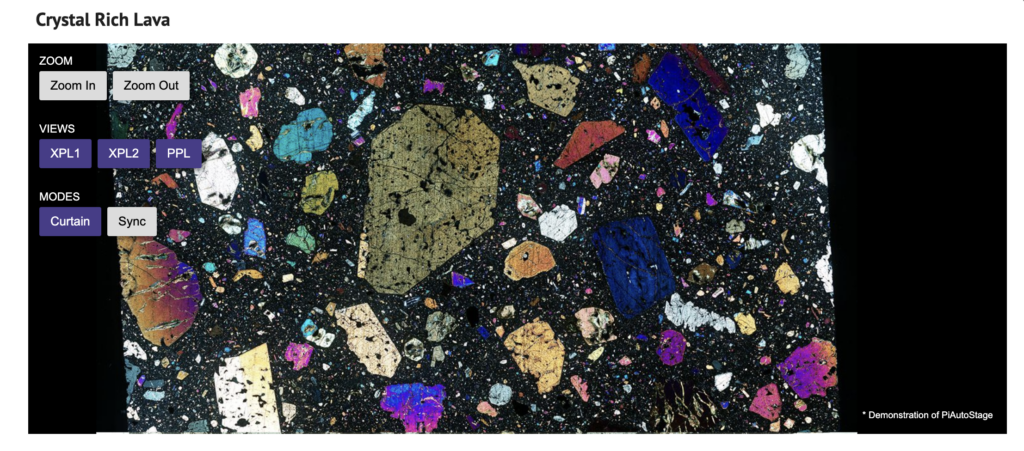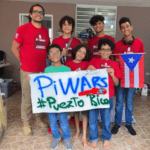University of Puerto Rico geology professor Tom Hudgins brought our attention to a microscope which uses a Raspberry Pi and a Raspberry Pi High Quality Camera to move a microscope stage while taking hundreds of pictures of the microscope slide, resulting in a high-resolution mosaic of the entire sample.


While there are microscopes built to do this out of the box, the cost tends to be prohibitive for many labs. That’s where our affordable hardware comes in.
Tom has so far been impressed with the innovation, which is the brainchild of Alex Steiner and Tyrone Rooney from the Deptartment of Earth and Environmental Sciences at Michigan State University. The fully open source invention is called PiAutoStage.
Parts list
- Raspberry Pi 4
- Raspberry Pi High Quality Camera wearing an ocular adapter
- Arduino Uno
- SG90 Servo Motors
Print files for the 3D-printed components are all available for free on GitHub.
How does it work?
Raspberry Pi is the central control computer. It runs a Python script (also available on GitHub) that sends commands to the Arduino Uno and camera during stage operation. Servo motors controlled by the Arduino Uno drive the gears in the mechanism, moving the stage and sample into position ready to be photographed. The device keeps moving the stage little by little until it has imaged the entire sample.

Stitching software then combines all of the photographs into one final image. Deep Zoom technology together with the OpenSeadragon webviewer makes it easier to deliver imagery that may be tens to hundreds of MB in size.
Examples of PiAutoStage in use
Here is some of the fantastic imagery PiAutoStage has created. While I have half a grasp of what Crystal Rich Lava is, you’re on your own with Eocene Foraminifera and Mantle Xenolith.

Where are they now?
We got in touch with Tom to let him know we’d be featuring this project on the blog. He came back with some excellent updates on where he and the PiAutoStage creators are now:
- Alex Steiner is now a senior geologist at Big Rock Exploration in Minnesota, US. He uses the PiAutoStage for collaborative mineral exploration projects.
- Tyrone Rooney is a professor at Michigan State University, and has used the PiAutoStage to generate high-resolution imagery of his teaching and research collections. He continues to digitise new samples as he acquires then.
- Tom Hudgins is a professor at the University of Puerto Rico Mayagüez and has digitised his teaching and research samples using PiAutoStage. He finds it especially helpful for research when he needs to share samples with collaborators, because it allows them to look at and interpret the samples before ever getting their hands on them. It also means they can identify any analyses that Tom can usefully do before sending them the physical samples.
Build your own PiAutoStage
The creators urge anyone planning on building their own PiAutoStage to first visit this open access peer-reviewed article which will tell you everything you need to know in order to get it all working.
Remember to cite the following if you do end up implementing PiAutoStage:
Steiner, R. A., & Rooney, T. O. (2021). PiAutoStage: An Open‐Source 3D Printed Tool for the Automatic Collection of High‐Resolution Microscope Imagery. Geochemistry, Geophysics, Geosystems, 22, e2021GC009693. https://doi.org/10.1029/2021GC009693
Also, DEFINITELY tag us in photos using #ShotOnRaspberryPi so we can follow the spread of this most excellent invention.








